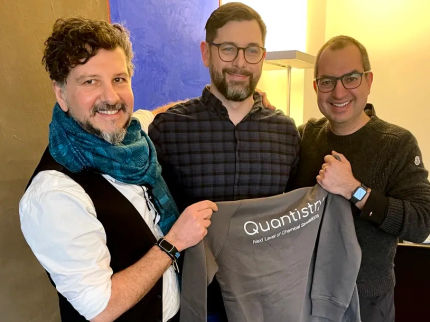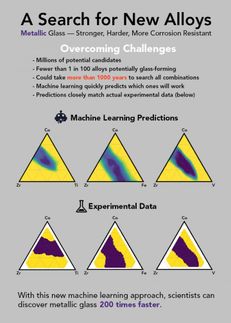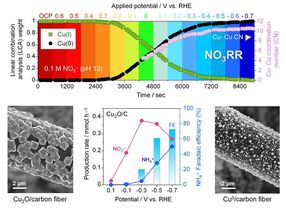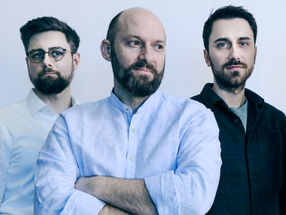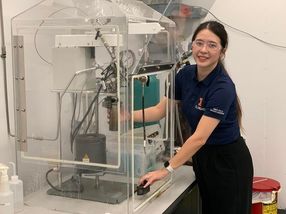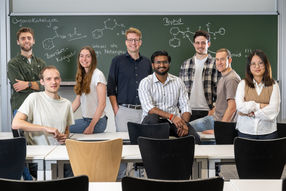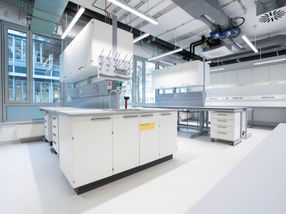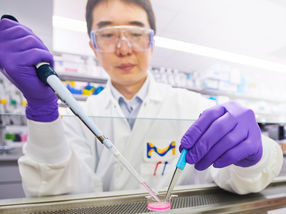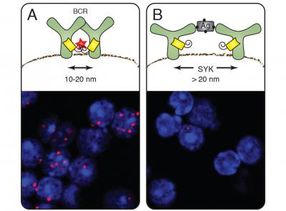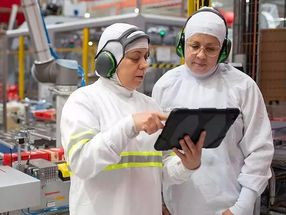Utilizing sunlight more effectively: Web platform aims to accelerate discovery of novel photocatalytic materials
European Union funds CASUS research project with 850,000 euros
Advertisement
Solar Energy can be used to generate electricity sustainably – and, in principle, it can also be harnessed to produce fundamental chemical compounds. However, the catalytic materials identified to date are not yet suitable for industrial-scale applications, as they often fail to meet critical criteria such as durability, efficiency, cost, and scalability. To address these challenges, a new web-based platform aims to consolidate existing research knowledge and expedite the discovery of novel materials with tailored properties. The Center for Advanced Systems Understanding (CASUS) at the Helmholtz-Zentrum Dresden-Rossendorf (HZDR) has secured nearly one million euros in funding from the European Union’s “Just Transition Fund” (JTF) to develop this open-access platform. In addition, the Free State of Saxony also has directly contributed to the financing of the project “Umwandlung von Sonnenenergie in Brennstoffe” (UvSiB, English translation: “Conversion of solar energy into fuels”).
Many fundamental chemical compounds used in the production of synthetic materials and fuels are derived from fossil resources such as crude oil and natural gas. The transition to direct use of solar energy would represent a major advancement regarding sustainability. For instance, the solar-driven conversion of water and carbon dioxide into solar fuels, such as hydrogen or select hydrocarbons, holds promise as a viable and renewable pathway for chemical energy production. However, the widespread implementation of this so-called artificial photocatalysis still faces several scientific and technical challenges – foremost among them the development of photocatalysts that are more efficient, stable, and long-lasting.
Promising new materials are frequently reported in research, but the experimental synthesis and validation cycles are both labor-intensive and costly. Computational science has proven to be a valuable tool in narrowing down potential candidates, reducing reliance on the traditional "trial and error" approach, and allowing researchers to focus on the most promising leads.
Although virtual material development is being utilized in various applications, there has yet to be a dedicated initiative explicitly focused on photocatalytic materials. The CASUS team, led by Dr. Hossein Mirhosseini, aims to address this gap with their project UvSiB. “This platform will enable both the scientific and industrial communities to efficiently and rapidly develop and produce next-generation materials for solar fuel production,” says Mirhosseini.
One of the core features of the upcoming web platform is high-throughput simulation. These simulations will be accelerated using a variety of machine-learning techniques integrated into the platform. Another significant feature will be artificial intelligence (AI)-powered analysis enabling faster mapping of specific material structures to their corresponding properties. A third key feature is the design of computational workflows. Users will be able to combine different high-throughput simulations and AI-based analysis tools into virtual experiments. Even complex workflows can be automated and executed with minimal manual intervention.
The CASUS team creates initial data sets, pre-trained AI models, and workflows for material design to encourage user adoption. This will allow interested users to explore the platform’s capabilities before contributing their own data and algorithms. Access will be open to scientists worldwide. The platform is designed as a fully open-access resource with no financial, technical, or legal barriers to entry.
Positioning information technology as a driver of innovation
CASUS Director Prof. Thomas D. Kühne highlights the strategic value of the platform in facilitating technological innovation: “The platform allows applied researchers to identify promising sustainable materials for solar fuel production more quickly. It will be another example of the transformative power of information technology enabling the development of innovative products and solutions for industrial applications.”
“The broader the adoption of the platform, the more valuable it will become to the scientific community,” adds Mirhosseini. “One of our goals is to provide user-friendly access to the platform, particularly for researchers in materials science, chemistry, or physics who may not have specialized expertise in data science or AI. We are committed to continuously evaluating and enhancing the platform’s usability to ensure wide accessibility.”
The Just Transition Fund (JTF) is a funding instrument of the European Union designed to support regions heavily dependent on extractive industries, such as hard coal and lignite. A total of 375 million euros has been allocated for Saxony's share of the Lusatian lignite mining area. While most of the funding is dedicated to economic support in areas undergoing structural transformation, academic institutions are also eligible for funding of research and development projects. Through the “Research InfraProNet 2021–2027” funding directive, CASUS successfully secured 850,000 euros in funding for UvSiB. The project launched in May 2025 and will run through the end of October 2027.




